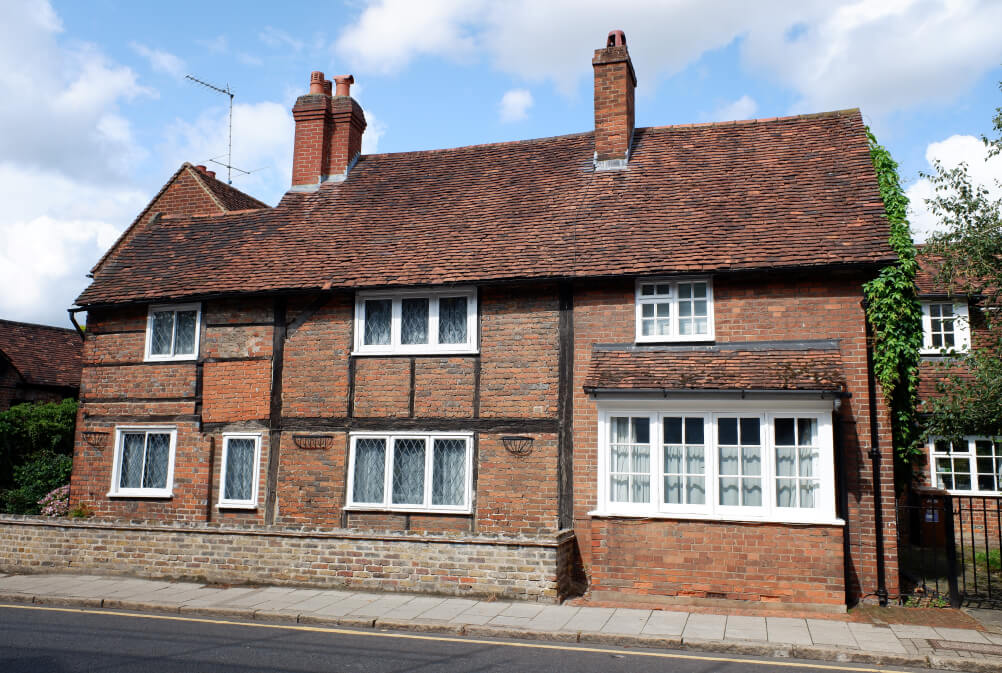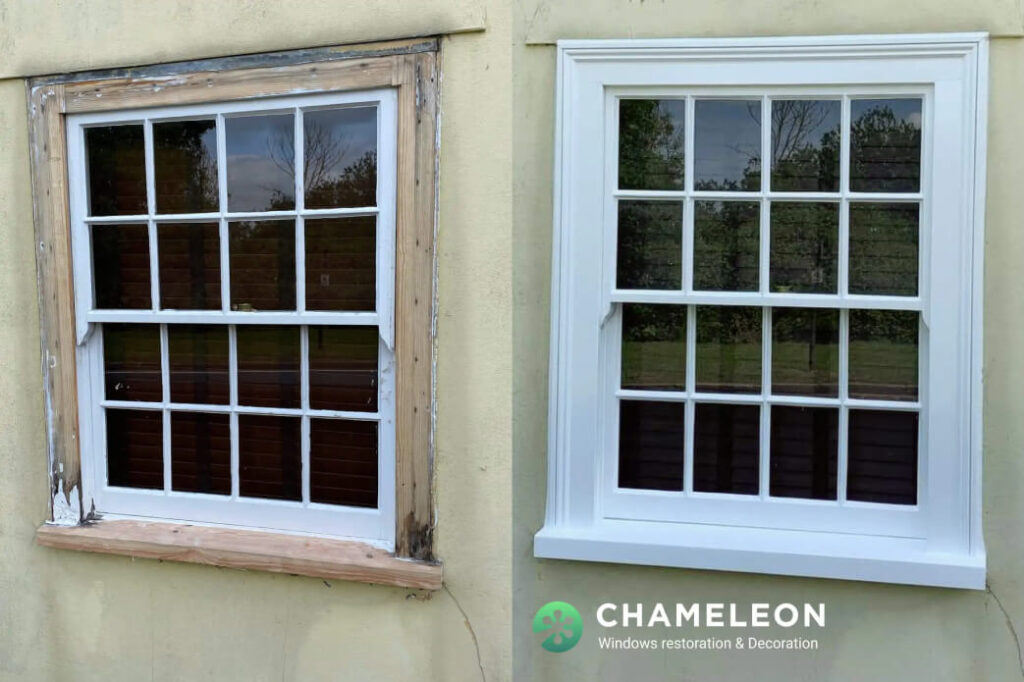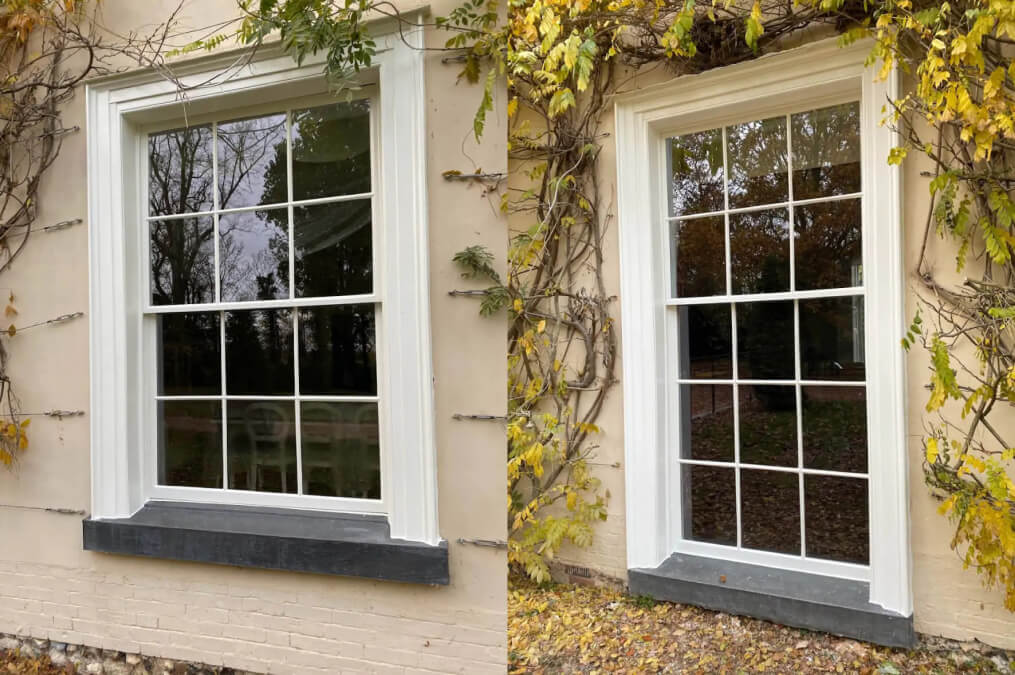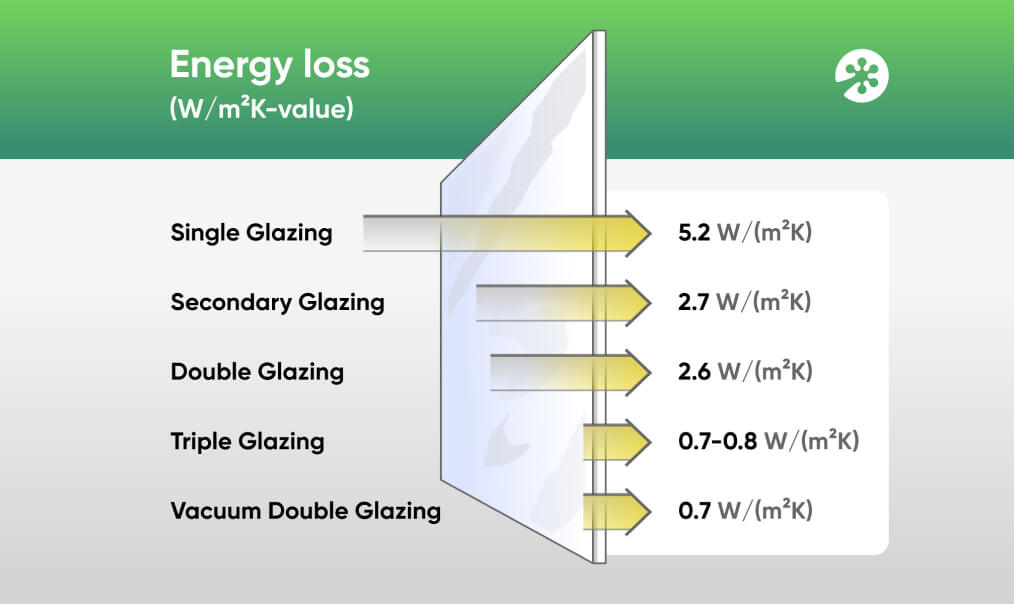Replacing or Maintaining conservation area windows can be tricky. There are many strict rules and regulations prohibiting significant changes to properties in conservation areas, restricting the homeowner’s ability to alter and update their property with modern materials.
Thankfully, a handful of options are available to homeowners today allowing them to install modern technologies like double-glazing in conservation areas.
Conservations areas are locations in England that are protected by Councils due to their historic or architectural value. There are currently around 10,000 conservation areas in England, with every local authority in the country having at least one.
There are many rules and regulations in place for properties in conservation areas, with homeowners in such areas needing permission to change aspects of their houses. Even cutting down a tree requires permission and six weeks’ notice for the local authority to decide whether the tree should be kept as they may rule that it adds character to the property.
Suffice to say, changing a conservation property’s windows is far easier said than done.

In conservation areas, windows aren’t just seen as something that can be looked out of and let some sunlight in. Instead, they are considered to be a vital part of a property’s appearance and a stand-out feature that is one of the first indications of a property’s age.
Unfortunately, the rules regarding changing windows in a conservation area aren’t black and white, and they often change on a case-by-case basis. As such, when planning or even considering changes, the best thing to do is speak to your local authority who can explain exactly what you can and can’t do on your property.
One general rule that is the case in most conservation areas, is that the property owner can make changes to their windows without permission as long as they change them with an identical replacement — ensuring that property owners aren’t stuck with broken glass or rotten window sill.
Conservation area property owners are also likely to find that the authorities will advise them to restore or retrofit their windows instead of replacing the entire unit.
One of the main issues with living in a conservation area is that the property’s windows are often suffering from issues like rot, dampness, and poor draught-proofing.
Many people would install replacement windows when these problems arise, though this isn’t always possible with windows in conservation areas.

Thankfully, there is an alternative solution available in the form of sash window restoration. Window restoration work does not require permission like full window replacement and is considerably cheaper, making it a great option for those who don’t live in conservation areas too.
Along with fixing the aforementioned issues like rot and dampness, window restoration can also solve numerous issues that are common with Georgian, Victorian, and Edwardian sash windows, such as weight balancing, sash cord replacement, and spring balance repair.
Another issue with windows in conservation areas is that they tend to be single-glazed.
Single-glazing is inferior to double-glazing for a wide range of reasons, which is why building regulations have effectively prevented single-glazing installation in new builds due to how inefficient they are by today’s standards.

Despite how essential double-glazing is, many conservation properties aren’t allowed to have it as it can drastically change the appearance of a property. Thankfully, however, an alternative solution is now available in the form of thin vacuum double glazing that can be fitted to original window frames.
Vacuum double-glazing is a new generation of double-glazing that features all the same benefits of standard double-glazing – and in some cases, triple-glazing – but is ultra-thin and discrete so it doesn’t harm a conservation property’s aesthetic charm. As such, it is far more likely to be granted permission to be installed by the local authorities.
Vacuum double-glazing’s ultra-thin design is achieved by removing the air between glass panes to create, as the name suggests, a vacuum. This is different to standard double-glazing, which fills the air between panes with gas that will gradually evaporate. Like with restoration, retrofitting is also considerably cheaper than full window replacement.
Vacuum double-glazing has many benefits over single-glazing, with the following three being the most prominent:
One of the main benefits of double-glazing, particularly vacuum double-glazing, compared to single-glazing is how energy efficient it is. Heat takes considerably longer to pass through standard double-glazing than it does single-glazing, which is ideal for keeping homes warm in the winter and ensuring that energy bills don’t get too high.
Despite how thin vacuum double-glazing is, it has a U-value comparable to triple-glazing, which essentially means it has fantastic levels of thermal efficiency. This also means that vacuum double-glazing is considerably better for the environment than single-glazing.

Simply put, the world is noisier than ever before. Planes, trains, cars, powerful motorbikes and crowds of people in the street can all cause noise pollution. Unwanted noise can make it tough to relax and sleep and can even cause health issues like high blood pressure and heart disease in adults, and impairments in memory for children.
Double-glazing has significantly better sound-proofing qualities than single-glazing, ensuring that noise pollution levels don’t get uncomfortably high.
Unfortunately, single-glazing is nowhere near as safe as double-glazing. Because of how thin single-glazing is, many people are able to break through the glass without tools. Singel-glazing is also prone to cracks, which can result in dangerously sharp shards.
Double-glazing, on the other hand, is far tougher and more durable, making it harder to break. There are also extra-safe double-glazing options available like toughened glass or laminated glass that are even harder to break and are designed to either hold in place when cracked or shatter into numerous small pieces if they are damaged — both instances prevent the occurrence of sharp shards.
Homeowners are far more likely to get planning permission if they properly research the history of their home and find what makes it unique so they know what needs to be preserved. It is also a good idea to seek expert advice from experienced professionals, who can advise you on your options; these experts can also help you with gathering the necessary details for your application.
After submitting the application, it is important to be responsive and give detailed answers to any questions or queries that the planning authorities have, as this will significantly speed up the application process.
If your planning application is denied, it is possible to appeal or submit a revised plan. Again, seeking expert help is highly recommended when doing this, to give your planning application the best chance of succeeding.
Planning permission is required to change your windows in a conservation area.
Potentially, yes, although permission is required from the local authority.
It is possible in some cases but permission is required first. The double glazing retrofitting where double-glazed units are fitted into existing wooden frames is more likely to be improved compared to full replacement.